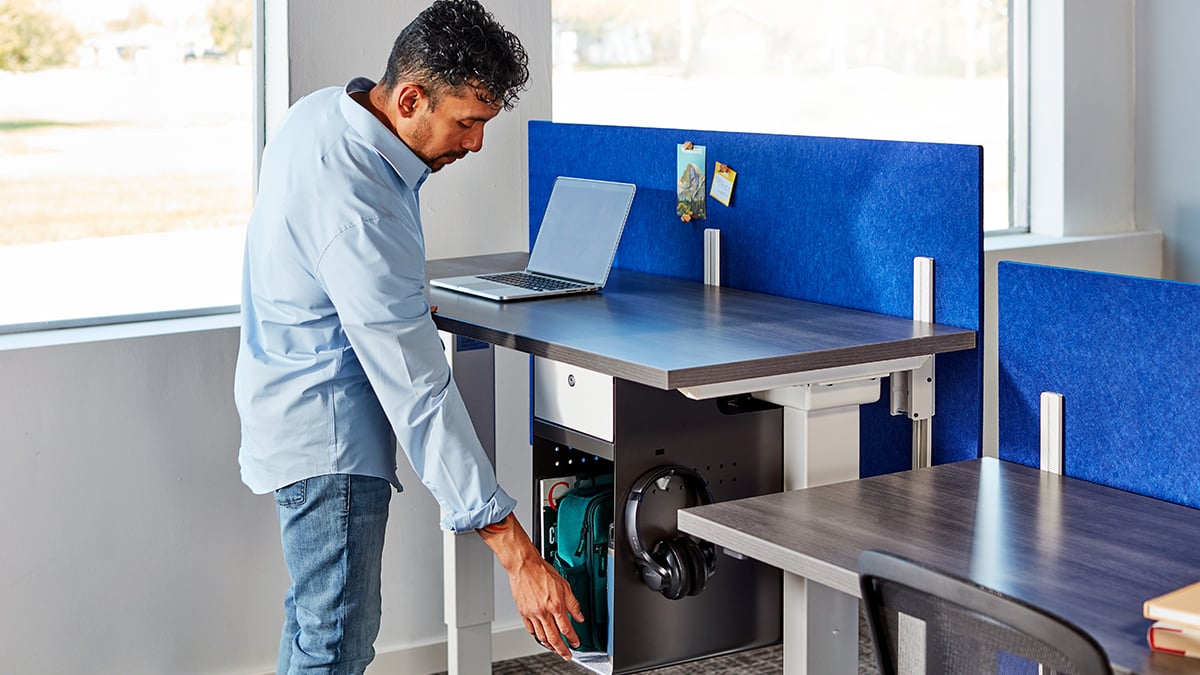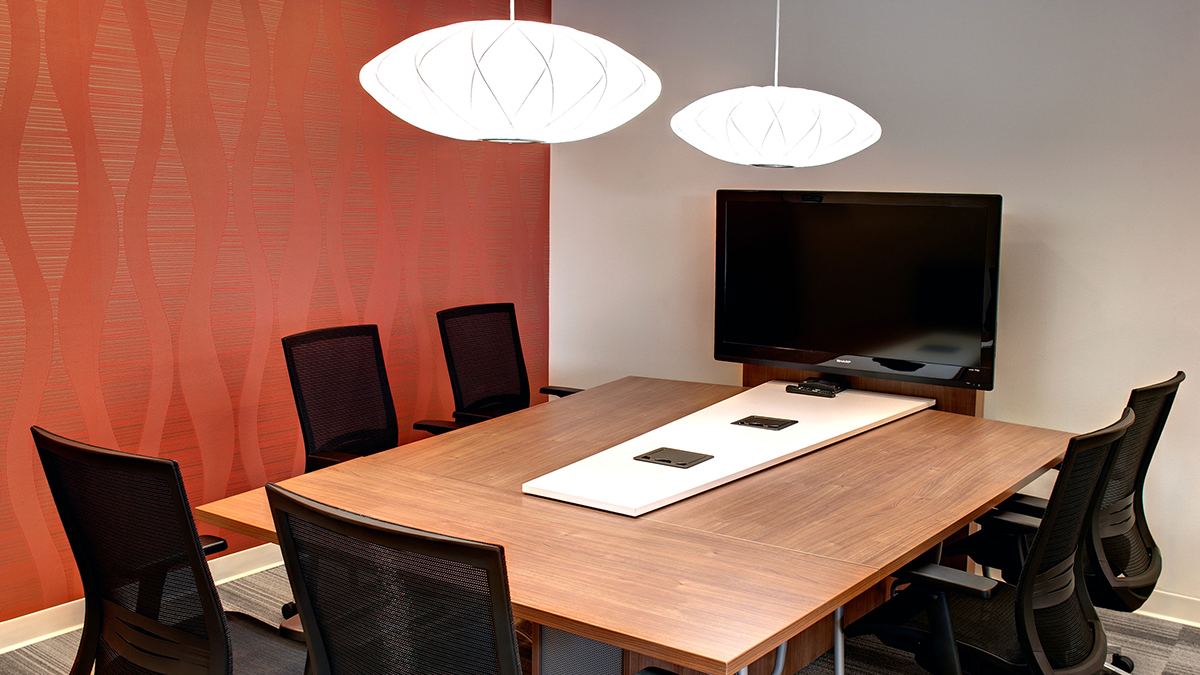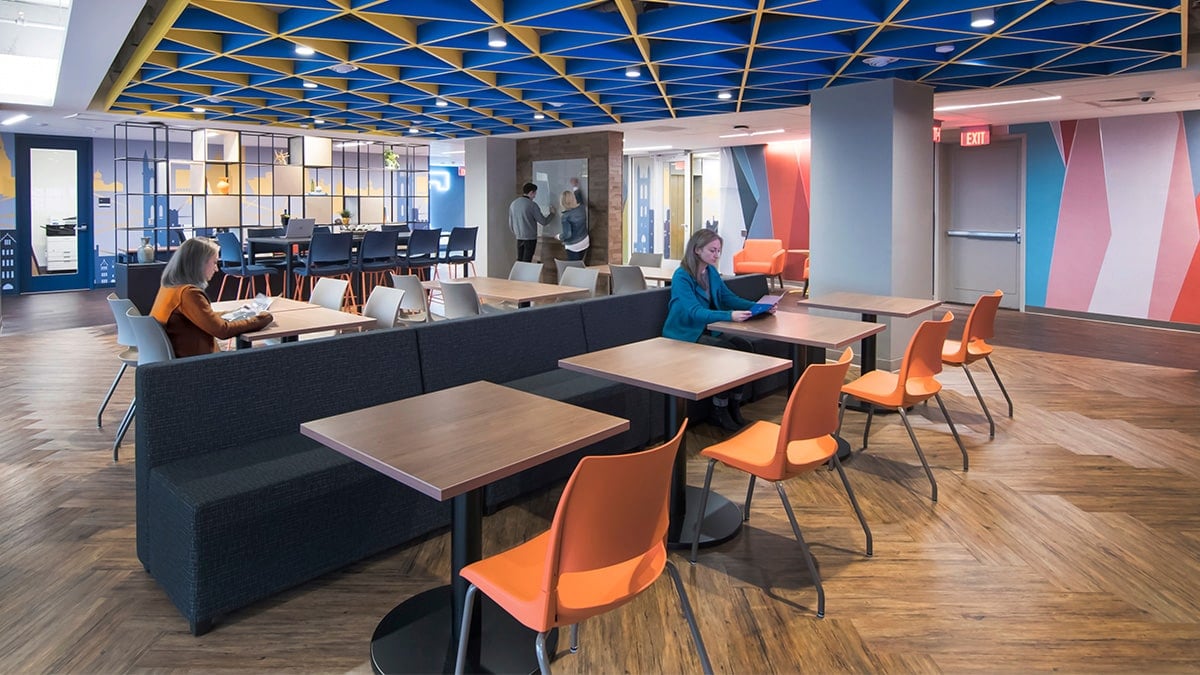For many people, the last year and a half working from home has reinforced the benefits of alternating between multiple work styles throughout the day. Doing so boosts energy, improves productivity and contributes to a healthier work environment.
As employees return to the office or engage in a flexible hybrid model, offering a choice over where and how work is done is critical to supporting employee satisfaction and retention.
How can employers harness this type of workplace flexibility? By giving employees options within their workspace. A choice-based work environment offers employees a designated workstation for focus work as well as a variety of other touchdown spaces that support different ways of working.
To better understand the choice-based work model, we recently interviewed workplace strategists from major markets across the country. Let’s explore how choice-based work environments can benefit employers and employees alike.
Utilize 100 Percent of Your Space
When working from home, employees tend to make use of every space they can. They might start their morning at the kitchen table, move to a desk in the den for a video call, recline on the sofa to read a lengthy report and catch up on emails and phone calls outside on the patio.
In the workplace, we tend to be much more constrained. According to research from Deloitte, we use just 40 to 50 percent of the available space in our offices at any given time during the average workday.
By creating offices with different places to work and interact, employers can make sure that every square foot of the office is put to good use.
For instance, individual workstations might feature compact, locking storage units that allow employees to keep their belongings protected while they move around the office. The unique design of our Bobbr Undermount Storage helps maximize square footage while confidently securing personal effects.

Another way to maximize space is to furnish common areas with easily reconfigurable furniture. Our Tattoo Collection can be arranged and rearranged by employees on the fly to support different work styles or engage in different workplace tasks.
In other areas, quiet spaces with comfortable chairs may be best for reading assignments and work that requires deep focus. A café or other informal meeting space may enable the serendipitous interactions and conversations that can lead to path-breaking innovations.
As employees move from space to space, this movement offers benefits. Research shows that a change of venue can spark creativity, boost energy and encourage collaboration and teamwork.
Support All Employees
Recent graduates working 9-to-5 for the first time have vastly different expectations for the workplace than veterans with careers spanning 40 years. We know that Gen Zers prefer a variety of workspaces, including an established home base. Gen Xers might have an inclination toward private workspaces, whether this looks like workstations with screens, small meeting rooms or privacy pods.
A choice-based workplace can help people of all generations feel connected to their organization – and do their best work.
For workplaces using a hybrid model, the office must also integrate employees working remotely with up-to-date video conferencing capabilities. By creating spaces that easily bring remote faces into the workplace, like those that use our Backbone Media Platform, employers can broadcast that they support their employees no matter from where they’re clocking in.

Plan Ahead
As individual preferences and generational proclivities take precedence in workplace design, employers are at a crossroads: adapt your workspace or risk losing good employees. Flexible workspaces will support the choice-based work environment as it becomes more prevalent and even essential to retaining and recruiting talented team members.
By offering an abundance of different spaces now, employers will be ready to meet the needs of the employees of today and tomorrow.
Let us help! Our workplace design experts would love to speak with you. Contact me at jonathan.webb@ki.com to start our discussion.

